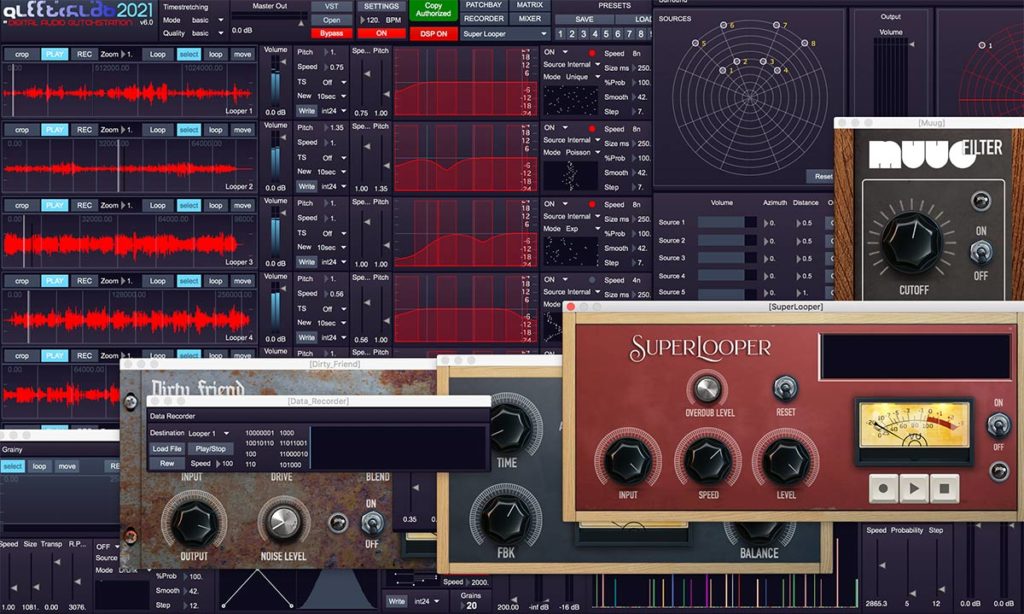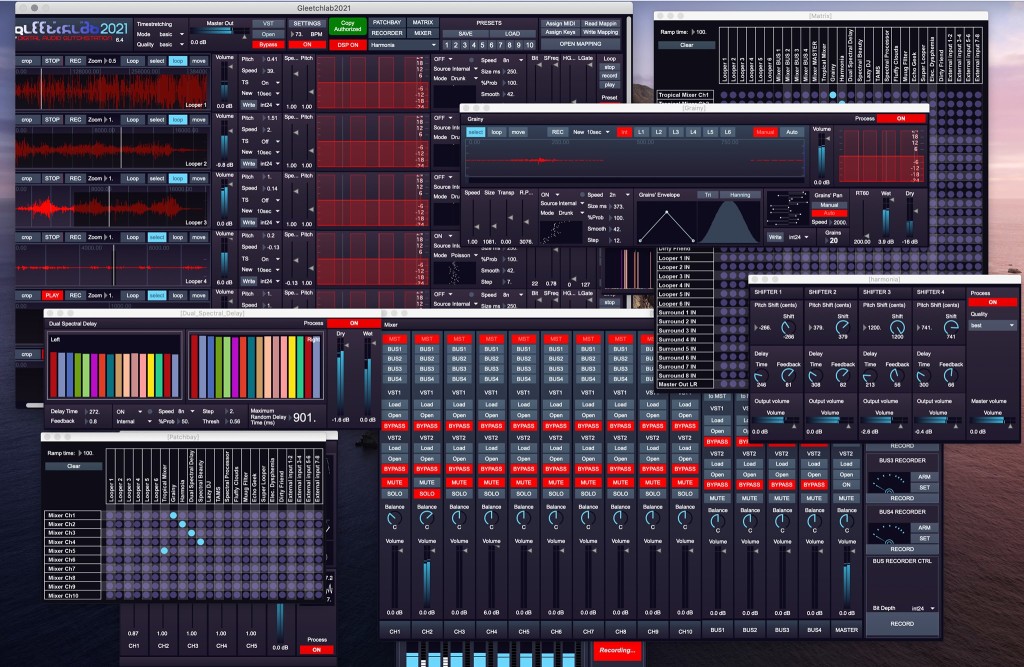No timeline. No sequencer. No stereo limitations. No “included library of trap loops and trombone samples.” Nothing but glitch – so much glitch. And Gleetchlab is not only still evolving, it’s on Windows as well as Mac. (Insert snark about glitch and Windows here.)
One license, twenty bucks (Eurobucks), both platforms. If you bought this year, upgrade is free.
Gleetchlab is not a plug-in, not a synth – it really is a DAW, with instruments, effects, looping, recording, mixing facilities, and a selection of tools designed for a workflow. It’s just that workflow happens to be deeply weird and experimental.
Since there’s no timeline, this is a studio gone wild – flowing, reprocessing, or to get a bit more technical, f***ing with s***.

But that doesn’t just mean it’s the equivalent of letting your cat walk onto your Cubase session. There’s some quite clever stuff in there, which does give it the feeling of a well-organized studio – if a very, um, non-commercially inclined environment. The interface may make your eyes hurt, but I’m impressed enough to rethink some of my own patched environments just looking at it. Updated – wait a minute! As I wrote this, 6.4 is up with a much easier-to-see matrix!


And there are rich MIDI and keyboard mapping controls, plus deep surround sound features.
All of this is new to Windows, but some of it is also new to recent versions of Gleetch on the Mac. If you haven’t had a look lately, you might revisit it for that reason, and discover it’s more to your liking than earlier renditions. (That mixer brings some nice balance to the Force, for example, and ensures this isn’t all chaos.)
Some people will spend a ton of money making these sounds on expensive room-sized modular rigs, and talk about the “physicality of analog” or something. But you can buy this for 20EUR with an insane amount of functionality – provided you don’t go blind trying to look at the UI or get lost in all that nonlinearity, but at least for the brave.
More goodies to consider:

- A tropical additive mixer (tropical as in the math for mixing, not as in sipping piña coladas and listening to the surf)…. plus another “crazy automixing processor” called “LAZY DJ”
- A deep granulator
- Multiple pitch shifter with delay
- Dual spectral delay
- Spectral EQ
- Modal engine TAMS (modeled percussion, uh, thing)
- A tool that reads PDF and images into buffers – instant glitch
- Spectral processor, inspired by the Buchla 296e – so a 16-channel bandpass filter with analysis, in the vocoder family of stuff
- Fluffy Clouds – a granular-ish buffer player
- And, heck, let’s throw in a Binson Echorec (delay) and ladder filter emulation, just because
- Plus extra loopers, a stutter, a tube saturator
And yes, powerful surround panning.
Here’s my suggestion: find a big-name DJ who has been booked to some kind of spatial surround VR gig, hack their account (I disavow knowledge of you at this point), and then replace their tech-house set with Gleetchlab.
CDM thanks you for your service.
There’s an updated manual. It has new stuff in it – not just that Windows port.
Giorgio, the developer, is an amazing person. Europe is sadly rolling back into hard lockdown again, so everybody stay safe and lock yourself indoors with this if you can. If we’re going to have our brains glitching out, I’m grateful at least some folks can glitch with Gleetch in the process. From March 2020:
Find Gleetchlab here, among other strange sound-making wonders. There’s an eight-minute (ha!) demo SO MAKE SOME DECISIONS FAST OKAY? (Eight at a time, not total, so not that fast.)